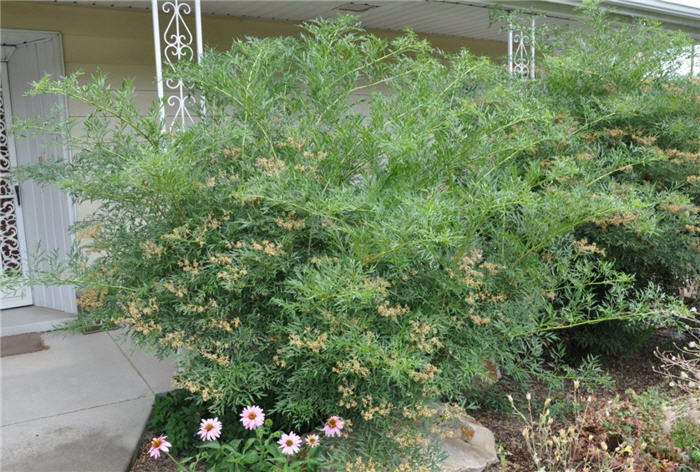| Botanical Name: Sambucus canadensis 'Laciniata' | |
| Common Name: Cutleaf American Elder |

-
Anatomy
-
Culture
-
Design
Plant Type
Shrub
Height Range
6-12'
Flower Color
White
Flower Season
Spring, Summer
Leaf Color
Light Green
Bark Color
Brown
Fruit Color
Blue
Fruit Season
Summer, Fall
Sun
Full, Half
Water
Medium
Growth Rate
Fast
Soil Type
Clay, Loam, Rocky
Soil Condition
Average, Rich, Well-drained, Moist
Soil pH
Neutral, Basic
Adverse Factors
Attracts Bees, Invasive
Design Styles
Meadow
Accenting Features
Showy Flowers, Unusual Foliage
Seasonal Interest
Spring, Summer, Fall
Location Uses
Background
Special Uses
Erosion Control, Hedge, Naturalizing
Attracts Wildlife
Birds, Wildlife
Information by: Stephanie Duer
Photographer:
Photographer:
-
Description
-
Notes
‘Laciniata’ (synonymous with and also known as ‘Acutiloba’) grows to about 5 to 8 feet tall and wide (and wider). It has compound pinnate leaves that are deeply cut. Tiny lemon-scented white flowers appear in large flat-topped clusters in June. Flowers give way to clusters of black elderberry fruits in late summer. Fruits can be used to make jams, jellies, pie filings, and elderberry wine. Fruits are attractive to wildlife. American elder (Sambucus canadensis) and European elder (Sambucus nigra) are closely related plants. The Royal Horticultural Society currently lists American elder as Sambucus nigra var. canadensis.
Grow in medium to wet, well-drained soils in full sun to part shade. Best foliage color is in full sun. Tolerates a wide range of soils, but prefers moist, humusy ones. Spreads by root suckers to form colonies. Prune suckers as they appear unless naturalizing. A large number of late winter pruning options include (a) pruning out dead or weakened stems, (b) shortening one year stems or (c) cutting the entire plant back to the ground to rejuvenate. Some horticulturists recommend a hard spring pruning for maintaining best foliage and habit.